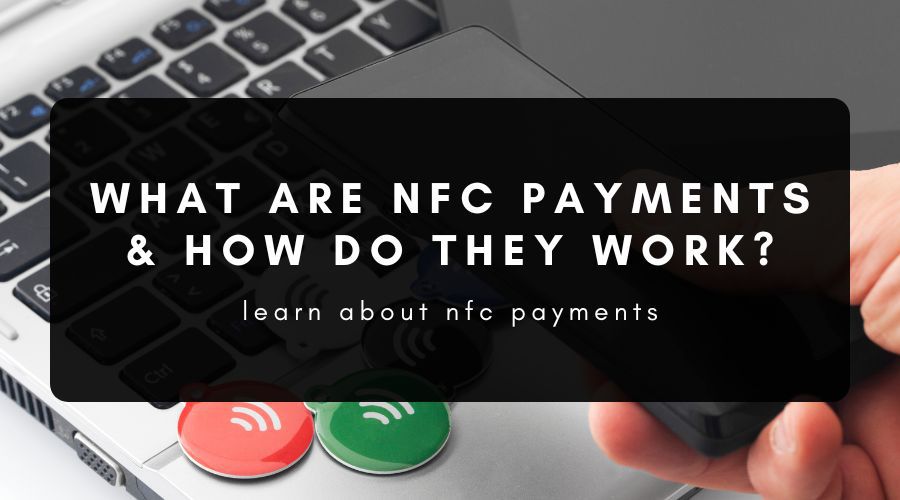
What Are Near-Field Communication (NFC) Payments?
Near-field communication (NFC) payments are revolutionising the payment industry with secure one-tap card payments on the go. Similar to Bluetooth, near-field communication uses radio frequency identification to allow two devices to give and/or receive information (in this case, encrypted payment data).
NFC payments are among the most secure payment methods because a unique token is generated for each transaction and no card details are captured on the merchant’s system. For small business owners as well as medium and large companies, accepting NFC mobile payments could improve your customers’ experience and increase your revenue.
How NFC Payments Work
NFC payments were introduced in the early 2000s, using the same radio-frequency identification (RFID) technology as equipment such as barcode readers, cattle-tag readers and identification card readers on private garages and office buildings. In Europe, contactless payments can generally be used for transactions up to €25.
The exact frequency used for NFC technology is 13.56MHz, and the distance required between the two NFC-enabled devices has to be less than four inches—ideally two inches or less. Unlike Bluetooth, the devices don’t have to be tethered and there is no need for a password.
The NFC Payment Process
To accept NFC mobile payments, the merchant needs an NFC reader that can accept NFC payments and contactless card payments. This reader can be connected to mobile devices used as a virtual terminal, allowing merchants to accept card payments on a phone.
After selecting “mobile payments” as the payment method, the customer signs into the mobile payment app using fingerprint technology, chooses the card they want to use and holds their phone to the NFC reader.
Once the NFC reader captures the tokenised card information, this information is processed through the merchant’s online payment terminal and global payment gateway and returns an “accepted” or “declined” message. Information about the status of NFC payments is updated in real-time in the business owner’s merchant services dashboard.
Security Benefits of NFC Payments
Contactless payments carry several security benefits for customers and merchants:
- Passcodes, fingerprint sign-in and tokenisation of card details provide three levels of authentication. Even if the mobile phones are stolen, the thief wouldn’t be able to sign in to the phone, much less sign in to the app and use the cards.
- Customers’ card details are not exposed at any point during the NFC transaction because the transaction data is tokenised dynamically—meaning that a different token is produced for each transaction.
- Thanks to tokenisation, transaction data is not stored on the merchant’s payment gateway or e-commerce website, reducing the risk of fraud and protecting the merchant from liability.
Other Benefits of NFC Payments for Merchants and Consumers
The other main benefits of contactless payments lie in their efficiency and convenience. Whereas chip card transactions take longer than magstripe card payments to process, NFC mobile payments are completed in seconds. Research supports the idea that quicker service increases customer satisfaction.
For customers, being able to pull out their phone and pay with Google Pay, Apple Pay, Samsung Pay or another NFC payment app means they don’t have to fumble around for their wallet and find the right card—it’s all right there on their mobile device.
Payment Processing
For merchants, accepting NFC payments is another “string to your bow”. It doesn’t replace the need for a payment processor and merchant services. After you accept contactless payments, you still need to keep track of your earnings and credit card fees with real-time reporting, analytics and a monthly merchant statement.
Moreover, the fees you’ll be charged for accepting contactless payments are set by the card networks, banks and your payment processor (not by Apple or Google Pay) and will typically be lower per transaction with a dedicated merchant account than they would be with an aggregate merchant account.
If you would like to accept NFC payments and increase your sales, choosing a payment processing company that streamlines your payment gateway and merchant services is the best way to go.

